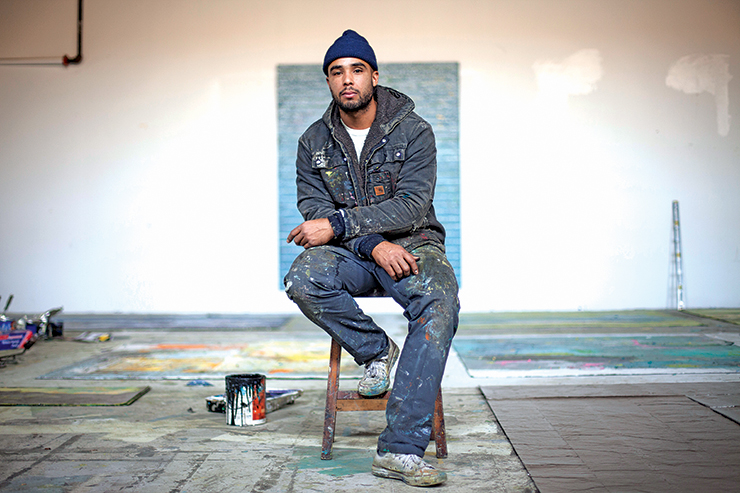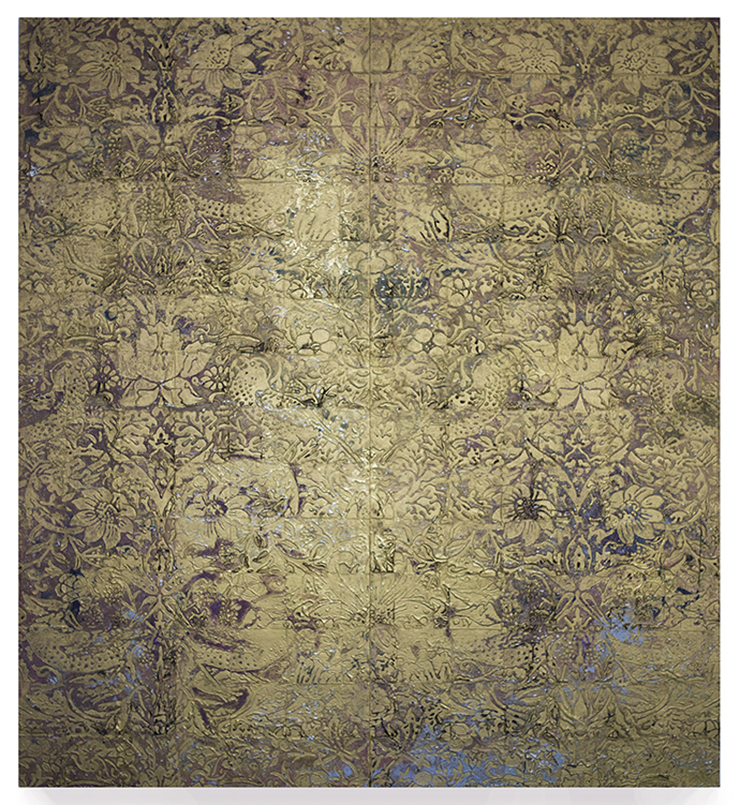
“These works are about the relationship between you and the painting,” says artist Hugo McCloud, of the “veil paintings” spread across the floor of his 4,500-square-foot studio in Bushwick. “They are reflective. You start to become a part of the painting as you stand in front of it. As you leave—you are no longer a part of the painting.” The new works are included in the 36-year-old artist’s winter show, opening December 10, at Sean Kelly gallery.
Comprised of aluminum foil and oil paint, the works are informed by McCloud’s knowledge of everyday material honed in a previous career as an industrial designer and welder. “My background is design,” says the artist as his pet dog, Gustav, lies across one of the pieces. “I worked with architects and developers for 13 years on construction sites and that’s where my understanding of materials comes from. My old firm, McCloud Design, had a full fabrication shop where we designed everything from door knobs and furniture to the interiors of hotels. I wanted to leave the rigidness of the design world and that’s how I fell into painting.” His last design project, AP Cafe, is a minimally conceived Bushwick coffee shop converted out of his former art studio.
The solo gallery show continues McCloud’s use of “universal materials” sourced from around the world, such as the tar, metal, wood and aluminum found in earlier work from South African shanty towns and the streets of west Oakland and Bushwick. “Instead of using traditional canvas and brushes, I adapted my design instruments—which were sanders and tools—to make my art,” says McCloud, who often uses a chemical oxidization process in his painting practice. The new paintings layer his personal experiences with the local histories of the sourced material to raise questions about inequality, materiality and status, and the artist remains intrigued by the opportunity to “change a person’s perspective” of the materials they see and use in the world. “Deterioration, rust and all those other material processes create a different language.”

On a recent trip to Bataan, Philippines, McCloud spent two months learning how to hand-carve elaborate designs into wooden blocks. He created more than 400 stamps that are featured in a series of “stamp paintings” that incorporate the regional markings. For the plastic bag paintings stretched across wooden panels, and the “sack sculptures” that are also a part of the show, the artist collected hundreds of bags on a recent trip to India. “They were originally created for delivering sand, concrete or some type of goods, and they were passed down from class to class,” says McCloud. “The sacks became a material for the lower class, who were using them as trash bags. These devalued materials were repurposed and now have value. That’s the idea surrounding this whole body of work.”










 in your life?
in your life?

